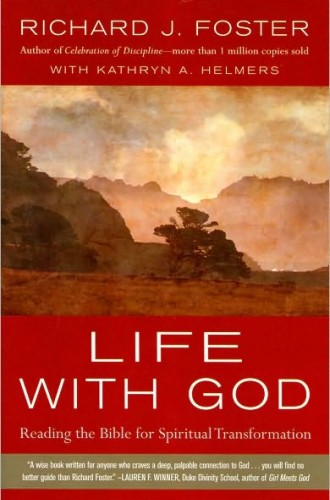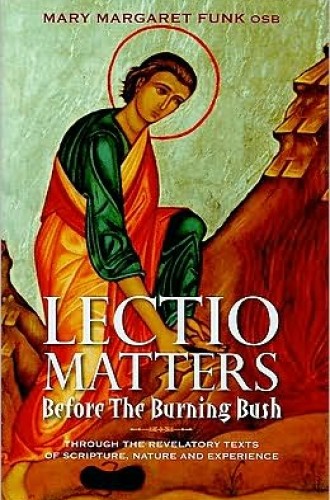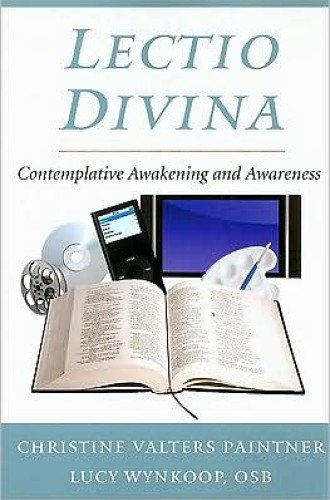Opening to God, Life with God, Lectio Matters and Lectio Divina
A member of an adult education course that I taught on the book of Acts showed up one Sunday morning with his own maps and charts, a CD by an evangelical preacher whose credentials seemed suspect, and a quiz on the material that he promptly distributed to the other members of the class. He proceeded to take over the morning's session as I sat there in proper indignation. He told me that he was tired of all the conversations about our lives. He wanted to "learn something about the Bible." If it had not been for his imminent departure from the class, we might have had a productive discussion about the different ways in which we learn when we read scripture. He wanted us to learn more about God, while I wanted us to also learn about loving God.
I am considering sending my erstwhile Sunday school student a copy of Richard Foster's Life with God, a book that reminds us that we do not read the Bible just for the facts. Foster is the founder of Renovaré, an institute for spiritual formation, and the author of several best-selling books on Christian spirituality. In Life with God, he argues that modern historical and critical interpretations supply crucial information about the Bible and are necessary for helping us see it as a contextual, fallible and human document, but that the heart of the Christian story is the God whom we encounter in the pages of the Old and New Testaments.
Read our latest issue or browse back issues.
Simply put, the Bible is about our life with God and God's life with us in Christ. Foster calls this the "Immanuel Principle" and summons us to discover the God who came to dwell with us and to do so by entering the pages of scripture in a mood of expectation, attention and humility. "Across thousands of years," Foster writes, "with wave upon wave of names and faces and recurring events, the Bible threads God's patient words of love and faithfulness: I am with you." The gospel proclaims the good news and invites us to become part of it.
In calling for a way of reading scripture that lures us into a transformative relationship with God, Foster evokes a practice of biblical interpretation unfamiliar to many people in the church. In contrast to modern biblical study, which emphasizes gathering information about the Bible as a text and historical document, the early church took a broader view of the nature and purpose of the church's sacred texts. Since at least Origen in the third century, patristic and medieval interpreters operated with the belief that there are four interrelated dimensions of meaning in Christian scripture: literal, allegorical, tropological and anagogical.
Biblical interpretation began with the classical sensus literalis, the literal or plain sense of the text as a reality-depicting narrative that informs the reader about God, people and events. The letter of the text was generally affirmed (with exceptions for passages that seemed fantastic even in a prescientific world), but it was never regarded as sufficient for understanding. A complete grasp of scripture required knowledge of both its letter and its spirit. The spiritual meaning of the Bible unfolded through the interpreter's effort to understand what have traditionally been called the allegorical, tropological and anagogical senses of scripture. An allegorical reading relates the whole of scripture to the figure of Christ (typically by reading the Hebrew Bible in light of the New Testament), a tropological approach inquires about the moral significance of the biblical text for the life of the Christian, and an anagogical interpretation reads the passage in question as an anticipation of our final union with the Divine. Literalism is very much a modern phenomenon. Ancient biblical interpretation imagined scripture as an ocean of vast depths that reflected the inexhaustible mystery and transcendence of God.
The sixth-century Rule of St. Benedict established lectio divina, or sacred reading, as an essential practice of monastic life. Lectio divina presupposed a fourfold pattern and applied it to the reading of scripture for the purpose of prayer. The 12th-century Carthusian writer Guigo II codified the practice of sacred reading by imagining it in terms of four rungs on a ladder, beginning with lectio ("reading"), an initial acquaintance with a sacred text; and proceeding through meditatio ("meditation"), a period of sustained reflection on its words; oratio ("prayer"), an active response to God; and finally contemplatio ("contemplation"), a resting in the presence of the Divine, ideally typified by mystical union.
Christine Valters Paintner and Lucy Wynkoop's Lectio Divina and Mary Margaret Funk's Lectio Matters offer fresh reappropriations of this traditional practice. For Paintner, a Benedictine oblate who teaches at Seattle University and the Loyola Institute for Ministry, and Wynkoop, a Benedictine nun and spiritual director at the Priory Spirituality Center in Lacey, Washington, lectio divina is "an invitation to listen deeply for God's voice in scripture and then to allow what we hear to shape our way of being in the world." When we read the Bible as contemplatives, we learn to sit patiently and attentively with the text and listen for God speaking to us through its depths. We allow it to permeate our consciousness and nourish our imagination, an act that Paintner and Wynkoop compare to slowly savoring a fine meal, or the process of rumination by which livestock repeatedly chew and digest their food.
Paintner and Wynkoop are acutely aware of the difficulty of practicing contemplative prayer in our busy, fast-paced technological world. Their purpose is to show how even a few minutes of prayerful attention to scripture each day may transform our awareness of God in the mundane realities of our lives. Hence they include a chapter outlining an abbreviated version of lectio divina for times when we are beset with work. More important, they extend the fourfold method to include spiritual reflection on visual art, music, literature, film and significant personal experiences. Lectio divina is a prayerful way of reading everything. It is a graced means by which God awakens and sustains our awareness of the holy in our study of sacred texts and in all of life.
Mary Margaret Funk, a Benedictine nun of Our Lady of Grace Monastery in Beech Grove, Indiana, makes a similar case for lectio divina as a template for Christian theology and life. Yet her work is more biographical and draws on her particular experience of studying and praying with the book of Jonah. While Paintner and Wynkoop envision the four stages of lectio divina as compressible into 20 or 30 minutes a day, Funk emphasizes that sacred reading is a process that takes a lifetime. The third rung on the ladder, oratio, includes our response to God in moments of prayer but is also, and more importantly, the hard work we engage in over time to become better people. It is nothing less than the moral life itself. Funk speaks personally about her own struggles with anger and pride to show how sacred reading positively shapes our moral experience.
If lectio divina can be taken as a model for openness to God, David Benner's Opening to God specifically examines how this openness unfolds in the practice of prayer. Benner is a psychologist and spiritual director, as well as professor emeritus of psychology and spirituality at Richmont Graduate University in Atlanta. For him, lectio divina evocatively portrays the moments of attending, pondering, responding and being that we experience when we pray. We learn through reading to pay attention to God, through meditation to ponder God's word to us, through prayer to respond in service and work for social justice, and through contemplation to rest in our being before and with God. Sacred reading therefore trains us in the art of prayer.
Lectio divina becomes in the hands of these writers not only a singular contemplative practice but an expression of the Christian form of life, a life of ceaseless prayer. They inspire us to read scripture not only critically but also contemplatively. And they call us to move, in the words of Paul Ricouer, "beyond the desert of criticism" to the new life that is already with us in Christ.









